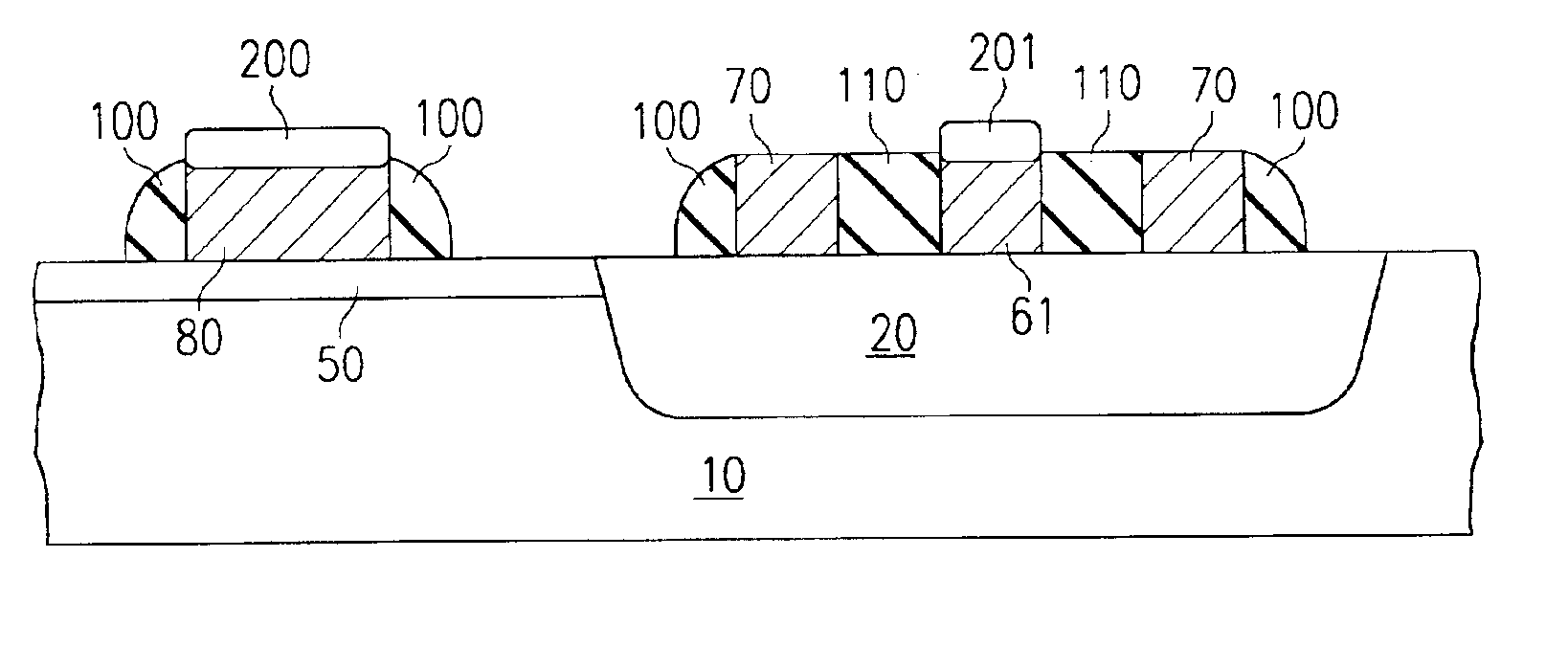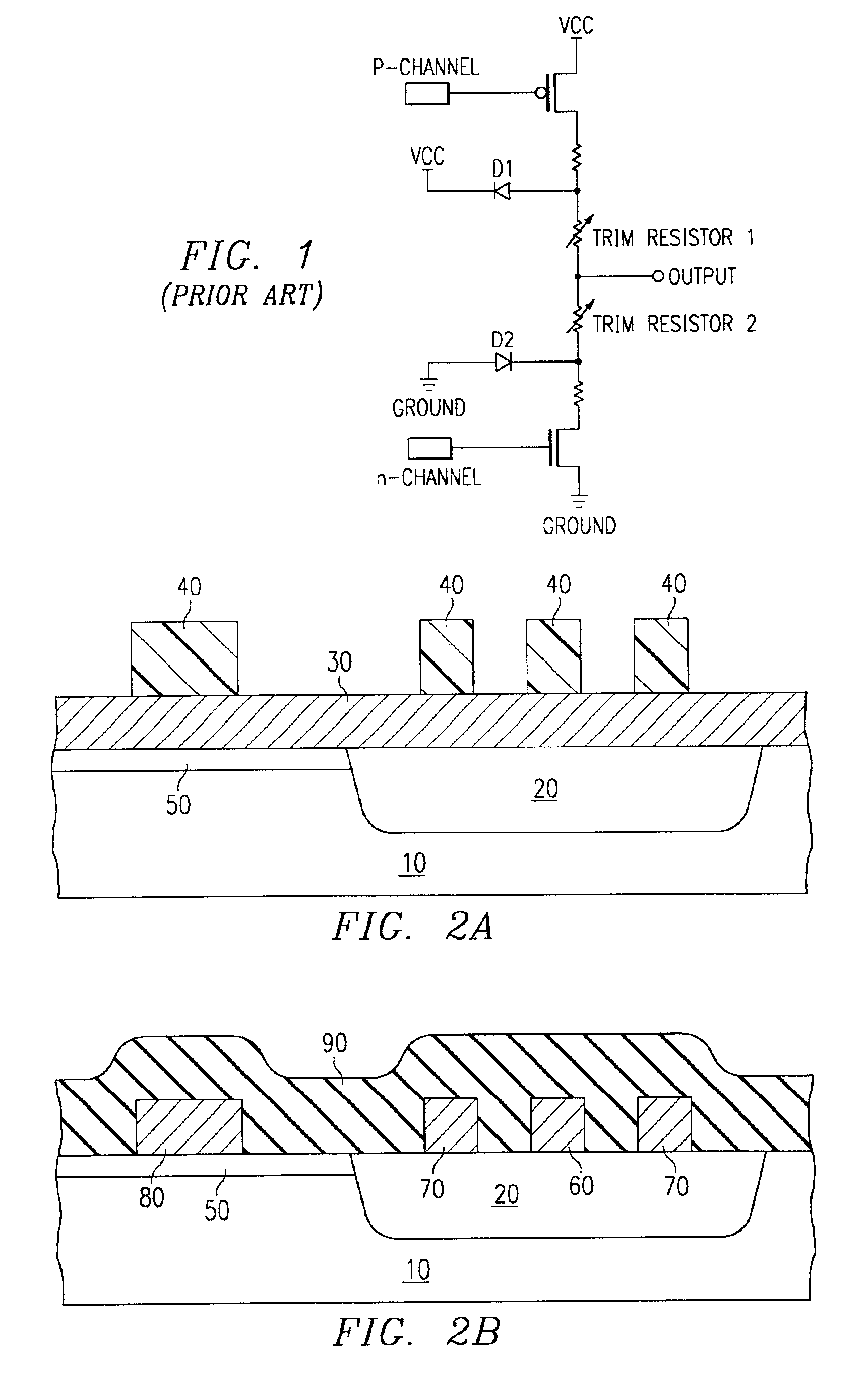On chip heating for electrical trimming of polysilicon and polysilicon-silicon-germanium resistors and electrically programmable fuses for integrated circuits
- Summary
- Abstract
- Description
- Claims
- Application Information
AI Technical Summary
Benefits of technology
Problems solved by technology
Method used
Image
Examples
Embodiment Construction
[0017]The invention will be described with reference to FIGS. 2-6. It comprises an on chip heater for resistor trimming and fuse programming.
[0018]Shown in FIGS. 2A-2D is an embodiment of the instant invention. As shown in FIG. 2A, isolation structures 20 are formed in a substrate wafer 10. The substrate wafer 10 can be a bulk silicon wafer, a silicon wafer with an epitaxial layer, or a silicon-on-insulator (SOI) wafer. An SOI wafer would have a buried insulator layer which is not shown in the Figures for clarity. The isolation structures can be shallow trench isolation (STI) structures or local oxidation (LOCOS) structures. Each of these STI or LOCOS structures can be formed using standard CMOS processing technology. A gate dielectric layer 50 is formed in those regions of the substrate 10 where CMOS circuits will be fabricated. This gate dielectric layer can be an oxide, an oxynitride, a silicate, or any combination of these materials. Following the formation of the gate dielectri...
PUM
 Login to View More
Login to View More Abstract
Description
Claims
Application Information
 Login to View More
Login to View More - R&D
- Intellectual Property
- Life Sciences
- Materials
- Tech Scout
- Unparalleled Data Quality
- Higher Quality Content
- 60% Fewer Hallucinations
Browse by: Latest US Patents, China's latest patents, Technical Efficacy Thesaurus, Application Domain, Technology Topic, Popular Technical Reports.
© 2025 PatSnap. All rights reserved.Legal|Privacy policy|Modern Slavery Act Transparency Statement|Sitemap|About US| Contact US: help@patsnap.com



